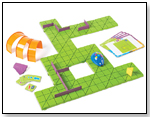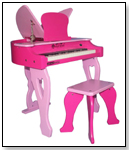|
|
Retailing Tips: Crushing the Competition Specialty Shops Battle Crossover Brands and Low Prices
About 25 percent of 40 specialty retailers polled by TDmonthly Magazine indicated this fall that the impact of mass-market stores on their business is greater than it was five years ago. Just as many said it’s about the same, while few acknowledged a lesser impact. 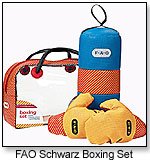 The recession-bitten economy is one obvious reason customers are prone to head to Target or Wal-Mart instead of an independent toy shop. But also, an increasing number of specialty brands are being filtered onto mass shelves — think Toys “R” Us bringing in FAO Schwarz boutiques. Chain bookstores like Borders and Barnes & Noble are pulling from the specialty bin, too, as they beef up kids’ playthings in their stores. The recession-bitten economy is one obvious reason customers are prone to head to Target or Wal-Mart instead of an independent toy shop. But also, an increasing number of specialty brands are being filtered onto mass shelves — think Toys “R” Us bringing in FAO Schwarz boutiques. Chain bookstores like Borders and Barnes & Noble are pulling from the specialty bin, too, as they beef up kids’ playthings in their stores.See where the worst of the competition lies, and what toy-store owners are doing about it. 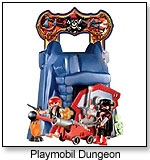 1. Specialty/Mass-Market Crossover. “I think there's more crossover and it's hurt our business more,” said Deran Muckjian, owner of Catch a Falling Star in Lexington, Mass., who pointed out that Lego, Playmobil, Alex and Schleich are in big-box stores. “Label after label was specialty only five years ago, and now it's not. 1. Specialty/Mass-Market Crossover. “I think there's more crossover and it's hurt our business more,” said Deran Muckjian, owner of Catch a Falling Star in Lexington, Mass., who pointed out that Lego, Playmobil, Alex and Schleich are in big-box stores. “Label after label was specialty only five years ago, and now it's not. Other lines retailers mentioned as going mass market include Schylling, Manhattan Toy’s Groovy Girls and Learning Curve’s Thomas & Friends. Also, CCA & B’s Elf on the Shelf is in Borders stores. 2. The Electronic Age. The Toy Shop in Concord, Mass., has been around since 1942, plenty long enough to notice that the recent and exploding trend of electronics and kidult toys drives tweens out of his store. Owner David Hesel, who told TDmonthly the Toy Shop simply can’t compete with Apple’s iPhones and iTouches, said just “play it off as much as you can.” 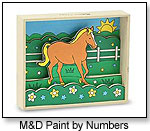 3. Other Local Stores. “There is a store that started out as an antique store. … Recently I noticed an entire wall with Melissa & Doug toys. Her response to me was, ‘Melissa & Doug said no one in the area was carrying their toys.’ I carry it and we also have a Learning Express along with Just Kidding Around literally three blocks from her,” said Jeanette Lauture, owner of Aunt Jean’s Toys & Treats in Montclair, N.J. 3. Other Local Stores. “There is a store that started out as an antique store. … Recently I noticed an entire wall with Melissa & Doug toys. Her response to me was, ‘Melissa & Doug said no one in the area was carrying their toys.’ I carry it and we also have a Learning Express along with Just Kidding Around literally three blocks from her,” said Jeanette Lauture, owner of Aunt Jean’s Toys & Treats in Montclair, N.J. “About four years ago, the pharmacy and local grocery started carrying more toys,” Jason Curtis, owner of Funtopia in Middletown, Calif., said of a competitor in his small town of 1,000 people. “We have to keep an eye on them. They don't really compete, but it's still disappointing to see a product we introduced to the area in another store.” 4. Price Wars. Especially in the tight economy this year, “people are watching their spending more and cost is key. Wal-Mart and Target offer a lot more cheap toys. We haven't changed our product line, but we do hear people discuss prices and the other stores,” Eric Masoncup, owner of Geppetto’s Toy Box in Oak Park, Ill., told TDmonthly. “It has become the norm to buy birthday presents at Wal-Mart,” said Mary Porter, owner of Curiosity Zone in Ashburn, Va. “Whether true or not, the perception is that specialty retail is expensive.” 5. The Internet. “Our biggest threat came several years ago when people started going to the Internet and shopping at midnight,” said Patti Tepper-Rasmussen, owner of Learning Tree Toys, Books & Games in Oklahoma City. “I talked [to customers] about shopping locally. And ASTRA (American Specialty Toy Retailing Association) did a big push and sent materials to help.” Given these obstacles and other types of competition your store may face, here are some additional tips on responding to keep your business running strong: 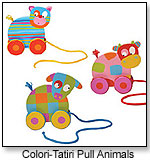 1. Specialize. “Be known for being the best in something or more than one thing,” such as infant and toddler goods, Rick Henry, owner of Stellabella Toys in Cambridge, Mass., told TDmonthly. 1. Specialize. “Be known for being the best in something or more than one thing,” such as infant and toddler goods, Rick Henry, owner of Stellabella Toys in Cambridge, Mass., told TDmonthly.2. Diversify. Last year, a Wal-Mart near Annie’s Toy Chest in Cocoa, Fla., started carrying Radio Flyer, so Annie’s stopped stocking the line. “They can put it out for the same price I can get it in,” Teresa Derry said, also noting she ceased selling games that are now in a local Books-a-Million. Derry replenishes the lost product with new goods sourced from trade shows. 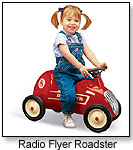 If you do carry crossover lines, such as Schleich or Playmobil, make sure your store has a more impressive selection, as Chuck Harper does at Explorations in Granger, Ind. If you do carry crossover lines, such as Schleich or Playmobil, make sure your store has a more impressive selection, as Chuck Harper does at Explorations in Granger, Ind.3. Welcome Customers. “We talk to the kids by name so they know they're special,” Mary Horne, owner of J. Christopher Toys in Jonesboro, Ark., told TDmonthly. Specialty retailers often maintain that their store’s personal touch is crucial in distinguishing them from competitors. 4. Open Another Store. “If you can afford to do it … open more than one location. That way, you're not reliant on one single store in one single location,” Henry advised. (See "Retailing Tips: When One Store Isn't Enough") 5. Encourage Loyalty. When Target began selling specialty toys a few years ago, Learning Tree Toys, Books & Games in Oklahoma City instituted a Frequent Buyer program and enticed customers to visit by letting them know their prices were the same and they could get their gifts wrapped, too, Tepper-Rasmussen said. 6. Just Keep Going. When a Walden’s Kids moved into Bryan, Texas, in 1993, Jacque’s Inc. focused heavily on customer service, gift wrap and community involvement, and also decided to expand the scope of her 2,400-square-foot store to encompass teacher supplies. “Later we were told by an employee who came to work for us that [Walden’s] was closing because of us, because we were such strong competition,” Owner Jacque Flagg told TDmonthly.  Writer's Bio: Julie L. Jones has written articles for both newspapers and magazines. Before joining the staff of TDmonthly Magazine, she worked as a communications writer and provided editorial support for a market research company. Read more articles by this author Writer's Bio: Julie L. Jones has written articles for both newspapers and magazines. Before joining the staff of TDmonthly Magazine, she worked as a communications writer and provided editorial support for a market research company. Read more articles by this author |
| |||||||||||||||||||||||||||||||||
Disclaimer Privacy Policy Career Opportunities
Use of this site constitutes acceptance of our Terms of Use.
© Copyright 2025 PlayZak®, a division of ToyDirectory.com®, Inc.


